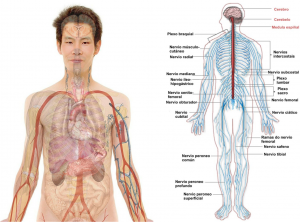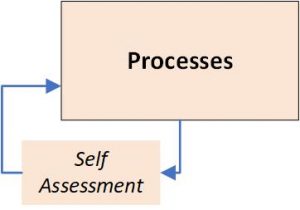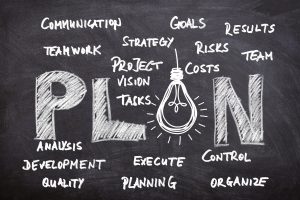Current Organization
 Whether you will be moving to “Change Organization” or are looking to improve your current organization incrementally, it is beneficial to understand the various aspects of the organization and how they interact.
Whether you will be moving to “Change Organization” or are looking to improve your current organization incrementally, it is beneficial to understand the various aspects of the organization and how they interact.
This section will discuss the environment, processes, controls, reporting, risk and planning. But first we want to discuss how to understand the organization.
- Anatomy of an Organization
- Governance/ Culture
- Processes & Implementation Development
- Feedback/ Reporting – Operational Integrity – Metrics, Reporting, Risk & Controls (Checks & Balances)
- Management – Flow of Process & Targets
- Planning
Other Sections
Anatomy of an Organization
 An organization has many similarities to the human body. Let’s look at organization. The human body has many organs. Each of those organs has a separate function. Each organ requires specific cell types that can perform the function (in an organization, called a skill set).
An organization has many similarities to the human body. Let’s look at organization. The human body has many organs. Each of those organs has a separate function. Each organ requires specific cell types that can perform the function (in an organization, called a skill set).
The nervous system of the body performs the messaging and communication function of the body. Similarly, the reporting and feedback systems provide that function in an organization. Though the nervous system is often shown in a separate diagram from the skeleton and organs, the nervous system is, in fact, integrated with the various functions of the body. Loss of various parts of a nervous system may not be significant until an issue develops and the brain does not receive its signals. When that happens, serious injury can occur because the brain is not aware of the problem. Similarly with an organization. So the reporting and feedback systems in an organization should not be considered an add-on, but an essential part of the organization. However, these functions should be lean, because, as in the body, unnecessary messaging may drown out the important information.
The nervous system has two divisions: a central nervous system (CNS), including the spinal cord and brain, and a peripheral nervous system (PNS) including all other nervous tissue. Both of these systems respond to external stimuli. Both the CNS and PNS are involved in the maintenance of the body homeostasis. Aligning with these are two types of responses: a reaction and a reflex. A reaction requires that messages are sent through the brain via the CNS before a response occurs. A reflex is a response that occurs without traveling through the CNS. Look at this as decisions in an organization. Some can be made locally, and some are made by central management. Also note, that while a reflex does not require the brain for the action, the brain may still be aware a decision is made and want to process it for further consideration in the future. Think hot flame (reflex) and avoiding a situation in the future.
So, as we look at the critical components for developing a viable organization or project, these components drop out:
- Governance/ Culture – How the organization operates. How well the organization operates.
- Processes – the operations (organs) of the organization.
- Management – the decision-making part of the organization (occurring at several levels)
- Feedback/ Reporting – messages being sent through the organization (nervous system)
- Planning – the periodic realignment of activities to improve the function of the organization (body)
(Anatomy Images: Organs by Gerd Altmann from Pixabay and Nervous System acquired from Wikimedia.)
Return to Top
 Governance is how decisions are made and implemented. Culture includes the customs of the people in their response to action and how they interact with each other. While Governance provides formality to the process, the response may be greatly affected by the culture. Organizations that are driven by the management may respond to any change as a requirement. However, if the culture is to do your own thing regardless, there may be significant hurdles for implementing change. Especially in large organizations or organizations with isolated operations, an independent culture may develop outside of the overall culture of the organization.
Governance is how decisions are made and implemented. Culture includes the customs of the people in their response to action and how they interact with each other. While Governance provides formality to the process, the response may be greatly affected by the culture. Organizations that are driven by the management may respond to any change as a requirement. However, if the culture is to do your own thing regardless, there may be significant hurdles for implementing change. Especially in large organizations or organizations with isolated operations, an independent culture may develop outside of the overall culture of the organization.
According to Peter Drucker: “Culture eats Strategy for breakfast”. So, one of the most critical parts of Governance is to work on aligning culture with the general goals of the Governance.
Change is the primary watch word for organizations today. Automation, new technologies, new processes, competition nipping at your heels. The concept of jobs existing for 5, 10, 15 years without change is gone. So what does an organization need to accommodate the inevitable change that is going to occur?
Some basic elements include:
- Understanding of purpose – Does the staff and your customers understand why the organization exists? How you are looking to do what you do? What you do? (Here is more information on Messaging. Also an understanding of the Golden Circle might be of interest.)
- Participatory –Communication among the staff and with customers – Some of the best ideas come from those doing the work or receiving the service.
- Adaptive/ Resilient – It is not if change is going to occur, but when. Can the organization respond to it? Part of this is that the staff feels they are part of the solution, not just a cog in a wheel.
- Tolerance for failure – The need to develop alternatives for change means that you will have some failures. Frankly, if there are no failures, the organization is not being pushing the edges that lead to significantly new opportunities.
- Understanding about how other parts of organization work – Especially those areas that are closely related or analogous to their operation. This also allows for better problem solving, since more options can be seen.
- Multi-disciplinary teams – You will see this in Agile development and DevOps. Both of these are IT approaches to development and operations. It recognizes that the best solutions are determined by having everyone who is affected working on a solution. Basically, get rid of the smokestacks that prevent optimal problem-solving.
- Sense of Urgency – Some will call this Agility. However, the organization needs to understand that time is also a critical parameter.
- Customer Orientation – Internal or external customer, the purpose of your existence is the customer or client you serve.
- Continual Improvement – Regular review of what you are doing and identifying ways to be better.
Moving a culture from smokestacks to cooperative and dynamic organizations can be challenging. However, if you look at these characteristics, the organization can be enabled to be more innovative at all levels, where initiatives are developed from the bottom up as well as the top down.
(Image by Gerd Altmann from Pixabay )
Return to Top
Processes & Implementation Development

Part of the challenge for implementing processes with their supporting systems is the reduced timeframes that are now required. At the same time there is the need for Operational Integrity, i.e., ensuring that a given operation is reliable, accurate and available. So, how do we accomplish this goal?
- Human Centered Design – Often related to information systems, the concepts apply in processes as well. This is to consider the interaction of people in the processes and systems. The integrity of operations depends on how smoothly people interact with the process or system. The more natural the system, the fewer errors that will occur and the more efficient to process will be. Remember, the system is supposed to respond to the individual, not the other way around.
- Far-sighted Design – Be aware of where you want to go. Especially with Agile systems, there is a tendency to develop a Minimum Viable Product (MVP). While that approach is important, designs should permit extensions without major rewrites (also called refactoring). Operations and systems need to be brought up quickly, but you do not want to have to rebuild the house when you need to provide an addition.
- Agility – In the past, timeframes of 3 months, 12 months… were needed to design and develop systems or just do maintenance. In those timeframes today, you can practically loose a market or miss a legal deadline. Processes need to have shortened timeframes with specific deliverables to ensure responsiveness to the environment. Shortened timeframes also permit evaluations by the user in a timely fashion, while the user’s mind is still on the subject.
- Documentation – In the past, design and documentation preceded any development or implementation. Often, issues would develop in the implementation and design and, as a result, documentation needed to be changed. In an agile environment, use cases are established and design is done real-time in the development cycle. While the use case may provide adequate information for testing, documentation still needs to be provided that will permit information to the user and document how the system is supposed to respond to the user. For processes, documentation provides the expectations from the user as to what they need for accomplishing their tasks.
- Training – Any process or application needs planned training. Two types of applications can be produced. 1. Intuitive applications, where it is obvious as to what you do. 2. Applications needing training. Unfortunately, intuitive means the user thinks like the designer. So an intuitive design needs to be exercised by non-knowledgeable users. We will call this reverse-training since the feedback is to train the application to be intuitive. The second type is to provide the user with an understanding as to the function to be accomplished and how to accomplish that function. This would be important especially for a business process. Either way, “training” must be exercised to ensure it works before releasing it or the application to the world.
- Continuous Improvement – Especially in the early life of a process or system, it will be identified that certain issues exist with the process or system. Though some issues can be resolved quickly, others will need to be prioritized. These items are considered technical debt. They are important since an overabundance may be an indication of a poor system, as viewed by the user. While workarounds may provide temporary to long-term solutions, they can also be considered as reducing the value of a process or application. That can cause it to be circumvented or replaced by a more user-responsive process or application.
(Image by Gerd Altmann from Pixabay)
 Self-Assessment – Internal Feedback
Self-Assessment – Internal Feedback
Feedback/ Reporting - Operational Integrity - Metrics, Reporting, Risk & Controls (Checks & Balances)
 The items included in this section should be part of the Processes and Implementation Development. Experience is that it does not happen. That section identifies the processes and flows that are desired. This section ensures that controls are in place that monitor the process. Do the accounts balance? Are all the objects accounted for? Are user and management expectations being met? This section comes under the heading: “You can’t manage what you can’t measure” (Peter Drucker, again).
The items included in this section should be part of the Processes and Implementation Development. Experience is that it does not happen. That section identifies the processes and flows that are desired. This section ensures that controls are in place that monitor the process. Do the accounts balance? Are all the objects accounted for? Are user and management expectations being met? This section comes under the heading: “You can’t manage what you can’t measure” (Peter Drucker, again).
Metrics
- Management – When a project or process is started, management generally has some expectations. What were they? How are they to be measured? These need to be obtained from the process or system.
- Customer Service – Number of complaints. Number of compliments. Maybe against severity. Remember to measure to good and the bad.
- Service Interruptions – Number and length.
- Time it takes to recover – Time.
Tracking Logs
These can be managed with spreadsheets as the simplest approach. Actually a single file with multiple sheets may be the easiest.
- Decisions – Because memories fade, decisions should be logged with date, time decision-maker, participants
- Risks – This needs to be done at each level of the organization. Should include who owns the risk and possible options.
- Management – Business, financial risks
- Project or process – Items that may prevent successful implementation
- Operational – Potential areas of failure (system, infrastructure…)
- Incidents – Occurrences of a problems with the process or system. May be failures, unplanned results, etc. This is tracking the occurrence and, as much as possible, surrounding conditions.
- Issues – Identification of the actual problem that needs a resolution.
- Lessons Learned – During various parts of the development process for a process or a system, a lessons learned review should occur. However, this is useful ONLY if the time is taken to incorporate the lesson into the process or system.
Controls (Checks & Balances)
These represent validations at various parts of the process or the system. In accounting, it is verifying the money put in is accounted for when it comes out. People who handle invoices do not handle the payments. Items moving across the interfaces are counted by the sending system and by the receiving system, and the numbers match. Customer orders go to completion. These should be incorporated as part of the system or process design, but since they are not defined by the user in the workflow, they are frequently left out.
Management – Reporting
Since this is not part of the workflow, it is often neglected. But it is critical in determining the success of the operations. Generally, there are two types of management reporting: status and exception. Status reporting provides information on throughput, totals, manpower usage,… Exception reporting includes issues, failures, incomplete processes, or generally something that is not as expected. There will also be standard reports versus ad hoc. The first are reports that come out on a regular basis. Ad hoc are those that are requested to obtain specific answers at irregular times.
Here is more discussion on Planning, Metrics, Risk & Reporting.
(Image by Pexels from Pixabay)
Return to Top
Management – Flow of Process & Targets
 Given a large enough organization, the people in the individual parts do not have the opportunity to see all of the moving parts. The role of management is to pull those parts together and to ensure that the whole is operating in the direction to optimize the performance of the organization. They are also responsible for having communication pipelines that engage the personnel in future planning as well as ensuring that all persons have an opportunity to provide input into the process.
Given a large enough organization, the people in the individual parts do not have the opportunity to see all of the moving parts. The role of management is to pull those parts together and to ensure that the whole is operating in the direction to optimize the performance of the organization. They are also responsible for having communication pipelines that engage the personnel in future planning as well as ensuring that all persons have an opportunity to provide input into the process.
The purpose of metrics is to have some method for measuring progress, and the various types of reporting allow management to see the state of progress, but to also identify problems as they occur. At the same time, they need to recognize that the numbers are not the final objective. They are the indicators. They still need to be considered in light of the ultimate goals.
Depending on the size of the organization, there are going to be several levels of management. Management closest to the operations (processes, systems) should have a set of metrics that enable visibility to issues as they occur. Operations may look like they are doing well, but issues may be developing (e.g., capacity overload) that can only be monitored by tracking appropriate numbers.
As issues develop, the first level management needs to have mechanisms to inform the next level. Even if resolved, repeat occurrences may be an indication of a future potential failure, and further action may need to be taken before the issue is a full blown problem.
Executive management should be getting information that informs them that the overall organizational goals are being met, as well as having visibility to recurring issues that are in the process of being addressed.
(Image by Gerd Altmann from Pixabay)
Return to Top
Planning
 “Strategy without tactics is the slowest route to victory. Tactics without strategy is the noise before the defeat. ” Sun Tzu.
“Strategy without tactics is the slowest route to victory. Tactics without strategy is the noise before the defeat. ” Sun Tzu. - “No plan survives first contact with the enemy” Helmuth van Moltke.
- “In preparing for battle, I have always found that plans are useless, but planning is indispensable,” Dwight D. Eisenhower.
These statements say two things:
- Planning is essential for success – it organizes your thinking
- Once a plan is made, be prepared to modify it aggressively – your plan made assumptions. Some assumptions may not have been good, or the world has changed and you need to accommodate.
While listed as the last topic in this discussion, in fact, this is where the work starts. We have listed the parts requiring consideration. Planning is where we decide as to how it will be accomplished.
Why are we doing what we are doing? Generally, if people know the “Why?’, they can make autonomous decisions, because they have a basis for making the decision. What follows is the ”How?” it will be done, then the “What?” will be done. Once this is established, it is important that a risk profile is developed at each level of the organization to determine issues that may need to be pre-empted. Metrics need to be identified and developed to ensure targets are being met, or to identify targets are in trouble.
There is the need to align the Governance to the Culture. This helps to ensure smooth transitions. Change management helps here. As the management structure is developed, there is a need to ensure smooth communications up and down the line.
Processes and systems need to have internal controls and review processes are needed to ensure ongoing continuity and quality. Often people plan to a point and stop. You need to go to the next step and see the impacts. What-if scenarios need to be developed to try to foresee potential failures and the steps needed
Basically, each of the other areas needs to be addressed to ensure an effective and efficient operation.
Here is more discussion on Planning, Metrics, Risk & Reporting.
(Image by Gerd Altmann from Pixabay)




